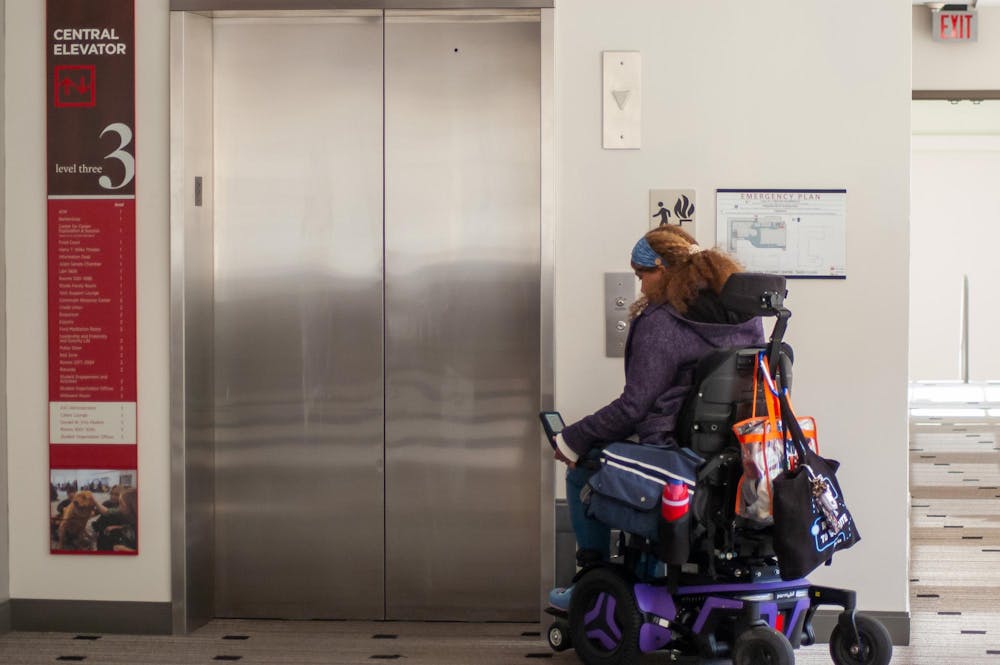You may be familiar with the waves of students that line the sidewalks on campus during the “peak times.” We’re all going to or coming from the same place: an academic building, a dining hall, King Library or maybe Armstrong Student Center.
I’m much like the other students that are in these waves, with one exception: when I get to my final destination, I can’t take the stairs if the elevator takes too long or is too full, or use a regular bathroom stall if the Americans with Disabilities Act (ADA) compliant one is occupied.
If I’m driving to class or my job at the Recreation Center (likely as I’m a commuter student), I can’t just park in any open parking spot. If I’m riding the buses around campus, I can’t just sit in any open seat or board through the back door because everyone else went through the front door.
Too many times, I’ve waited way too long for the elevator, only to find it full of students who could have taken the stairs. Several times, when I’ve been eating in the dining halls, I’ve witnessed the able-bodied student workers go straight to the ADA stall in the bathrooms, despite me being in the process of maneuvering to it in my wheelchair.
I’ve also had to call the Miami University Police Department far too many times because people parked in the handicapped parking spots without a placard. Oftentimes, this was the last accessible spot, and I not only depend on them because of my disability, but also because I drive a van that is accessible for my power wheelchair. Without these spots, I cannot park and get in and out of my own vehicle.
Riding the bus around campus should make things easier on me, but that isn’t always the case: 90% of the time, despite the driver’s instructions, students – and some grown adults – storm the front door, where the ramp is, leaving me to board last. If they step on the ramp while it is deploying, the fuse blows, and it won’t work unless the driver operates it manually. I don’t mind if this happens when I’m getting off the bus, but I’ve been soaked in the rain one too many times.
Additionally, people tend to go straight for the seats in the front of the bus, which are reserved for those with disabilities. Those seats lift up so that mobility devices (wheelchairs) can be safely secured. I cannot ride anywhere else but there, as it’s both against the law and unsafe for me to ride without my chair being secured.
This becomes the difference in me being on time for class or work and being late.
It is not my intention to call out those who have invisible disabilities. When I’m not using my wheelchair (I can stand and walk short distances), you sometimes can’t tell I’m disabled unless you know me. However, wheelchair or no wheelchair, I still need the things that are designed to help me: the elevator being available with room, the ADA stall in the bathrooms, the handicapped parking spots in parking lots and the front seats on the buses.
I didn’t ask to be disabled. Kindness is free. It would make my life all that much easier if you’d help spread it around.
Whitney Wilson-Harris is a combined graduate student at Miami University studying journalism and public health education and promotion. She works at the Rec Center and is part of the design team at The Miami Student. She also writes articles for the opinion section here and there.




